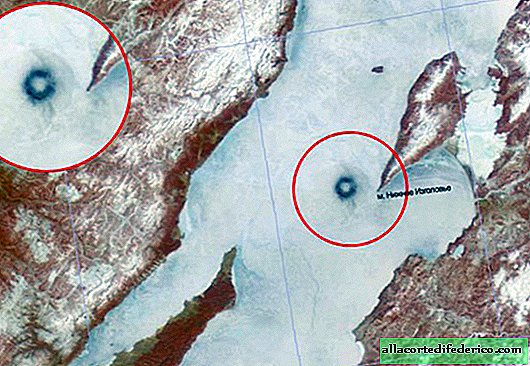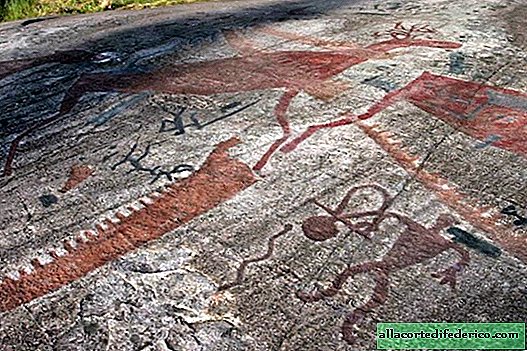Mysterious circles on the ice of Lake Baikal: scientists have figured out how they form
Scientists began to explore Lake Baikal in the XVIII century. Numerous scientific expeditions of the XIX-XX centuries, which determined the depths of the lake, the properties of its water, the composition of the fauna, laid the foundations of modern knowledge about the famous lake. Next was a series of deep-sea dives, which was supposed to reveal the last secrets of Lake Baikal. But, despite all the efforts of scientists, the lake is in no hurry to part with its riddles, and one of them is huge circles on the ice of a reservoir.

For the first time, circles on the ice of Lake Baikal were discovered in 1999 while studying satellite images of the lake. The dark circles were very large, with a diameter of 5-7 kilometers and a ring width of up to 1 kilometer, they clearly stood out against the bright background of Baikal ice.

They could be seen only from the air, from an airplane or in satellite images, since the enormous size does not allow such objects to be observed standing on ice or even from the tops of nearby ridges. The dark color of the circles is due to the smaller thickness of ice in this place, through which the Baikal water shone through.

Immediately after the discovery, various hypotheses began to be put forward, but the activity of Baikal gases was considered the most probable. The fact is that from the bottom layers of the lake gas bubbles periodically rise (consisting mainly of methane), the study of which was carried out by scientists A.L. back in the 60s of the XIX century. Chekanovsky and A.M. Lomonosov.

It was assumed that the upward flow of gases leads to the destruction of ice, which is thinning. But this theory did not explain the fact that gas bubbles from the depths of Lake Baikal rise to the surface regularly, and much less circles were found. Further studies of this phenomenon have led to a number of interesting discoveries. After studying archival satellite images, scientists counted 45 rings on Lake Baikal that formed in different years and in different places of the lake. But the most interesting thing in all this is that similar rings were found on the surface of Lake Khubsugul, which is located west of Lake Baikal, on the territory of Mongolia.

Scientists were able to find out that the cause of the appearance of rings is warm vortices, as Baikal researcher A. Kuraev said at a recent conference. A strong current is formed along the periphery of the vortex, which, as a result of heat exchange, thins the ice.

These thermal vortices were recorded directly during the appearance of the rings, as well as shortly before their occurrence. Now, scientists have to find out the reason for the formation of these same vortices, the mechanism of formation of which is not yet fully understood.


















